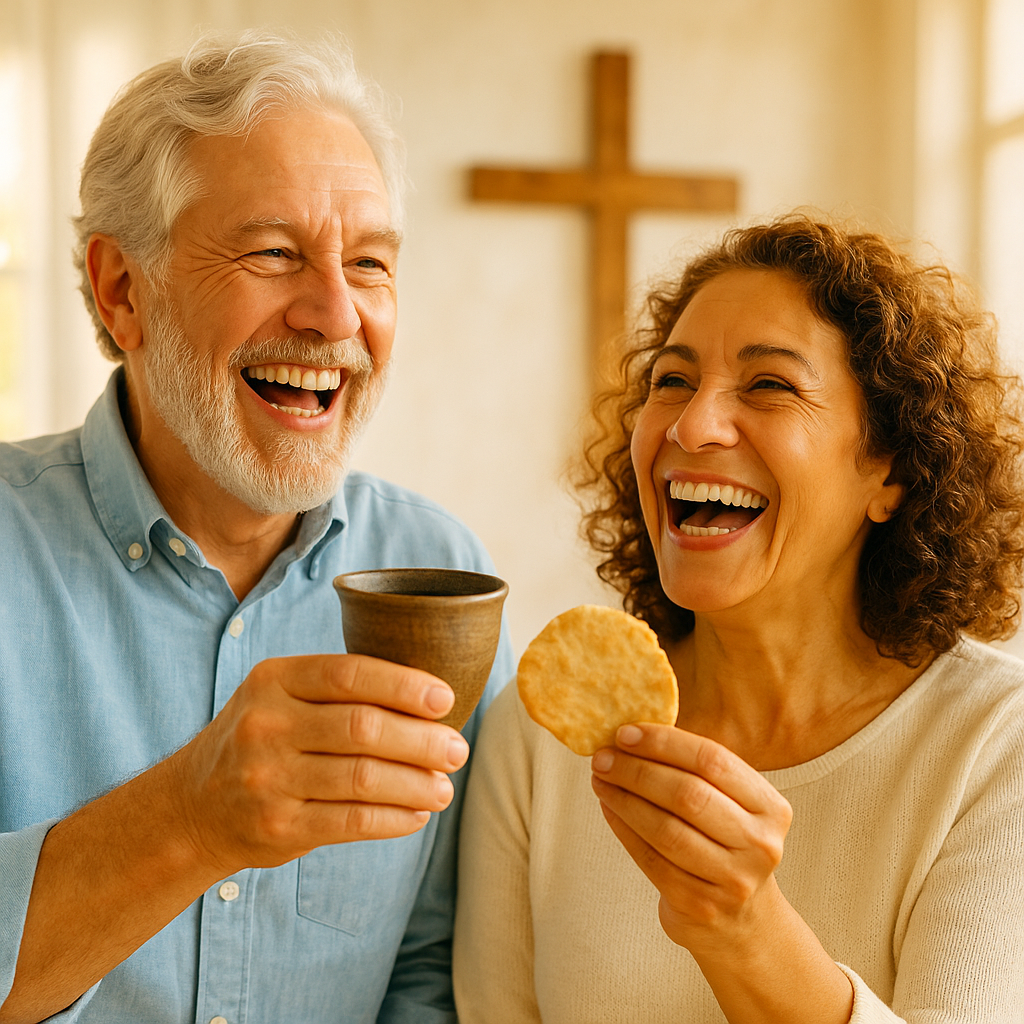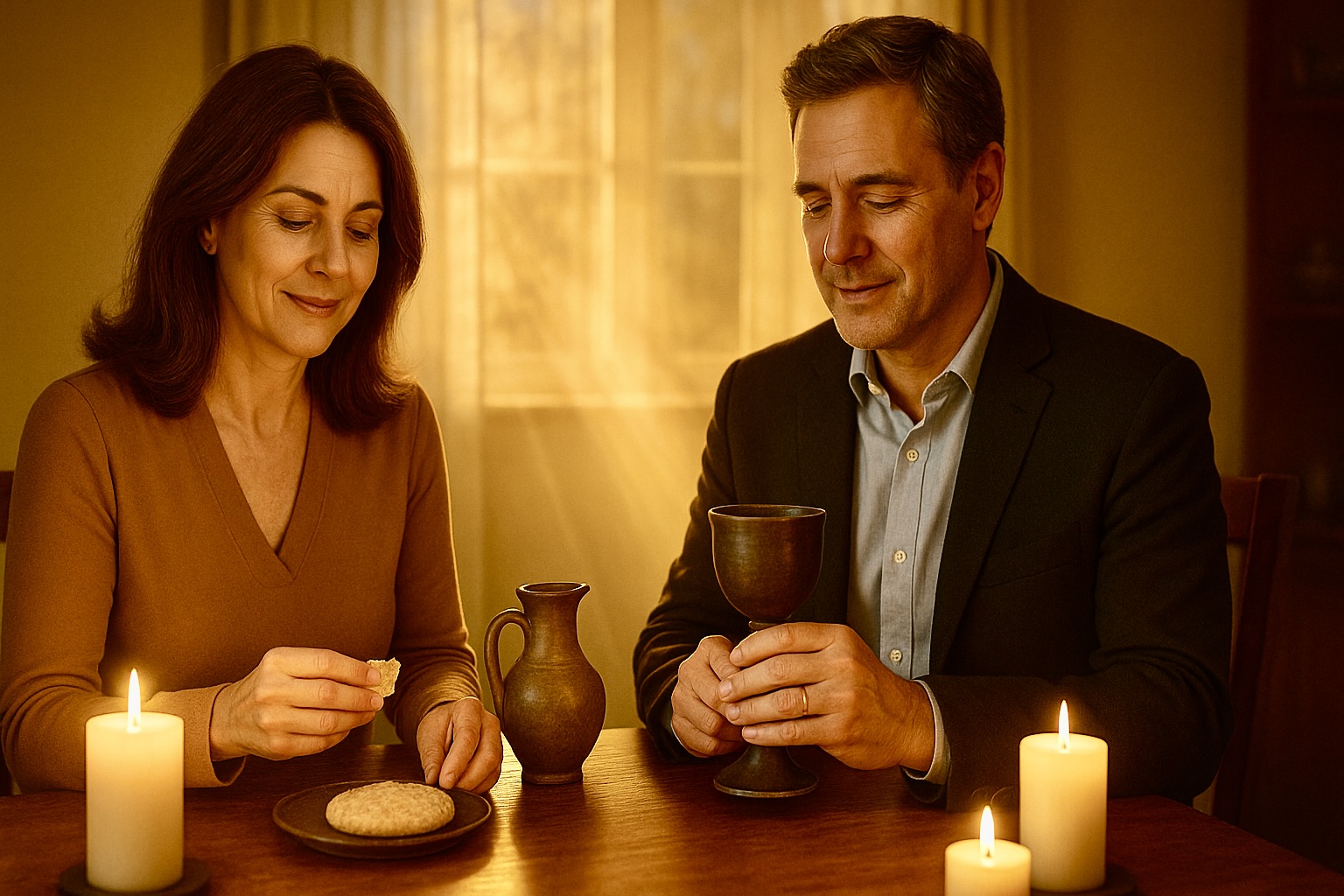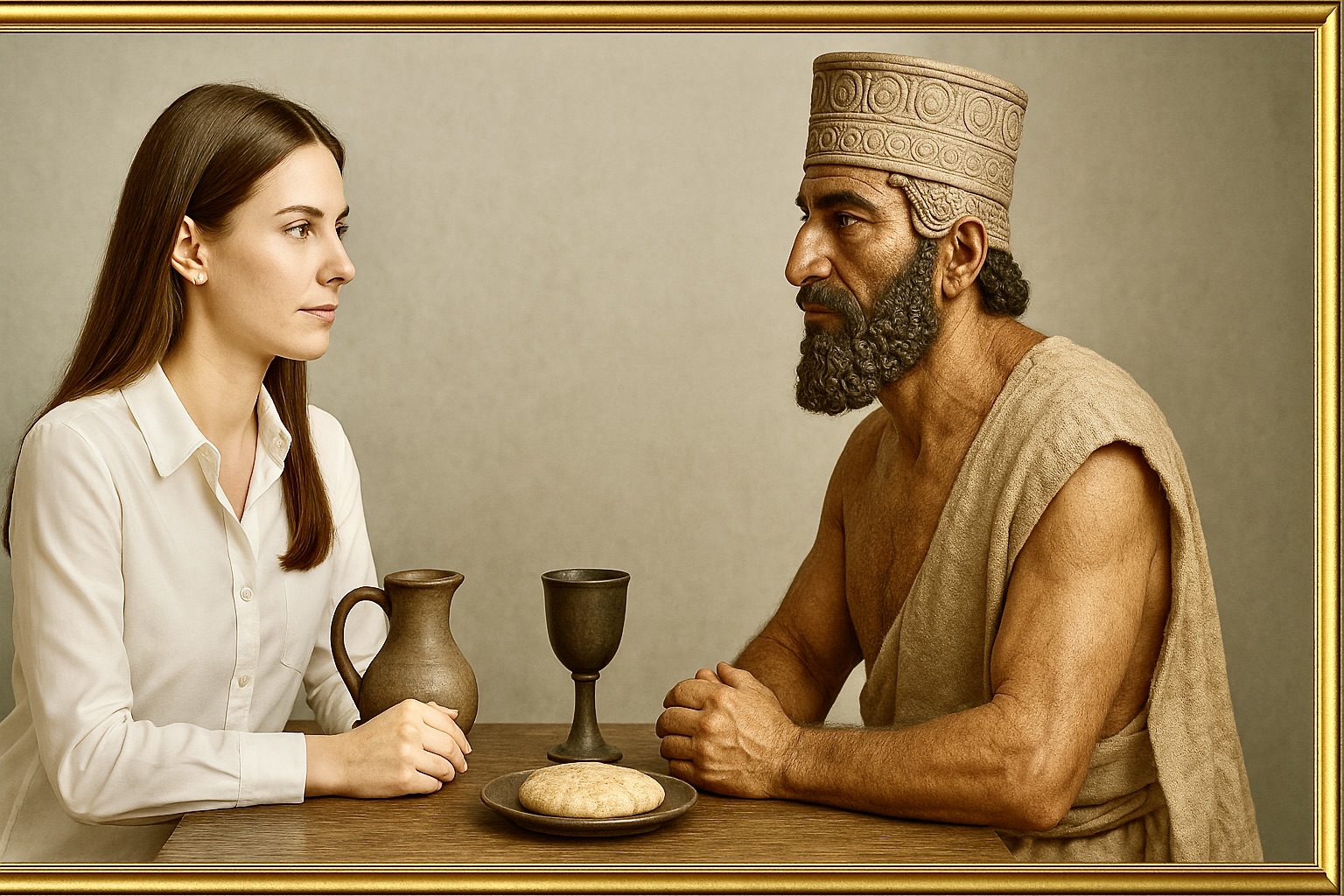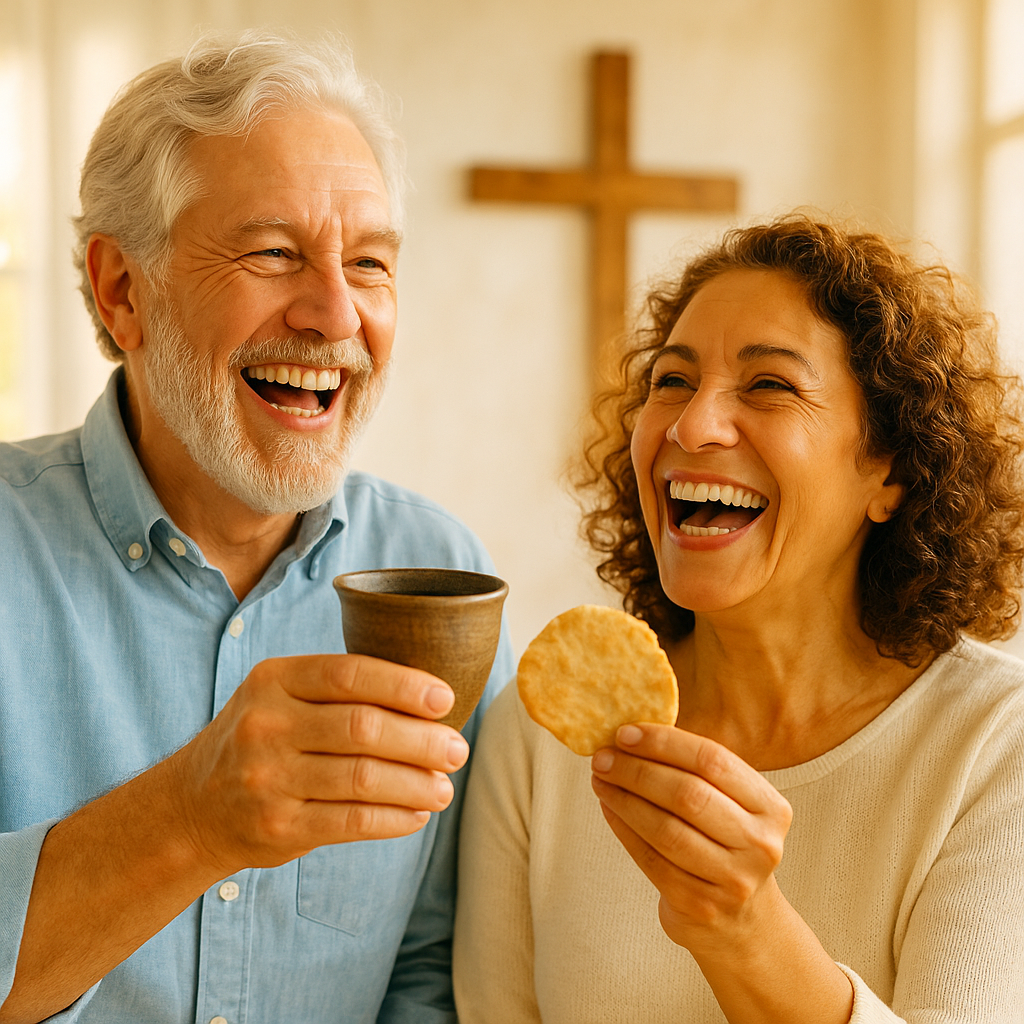Communion: From Covenant Table to Modern Practice | Live Service Tonight

Communion: From Covenant Table to Modern Practice
What if the bread and cup you take in church each month were far more than a symbol? What if this moment was the living echo of an Ancient Near Eastern covenant meal, a binding act between God and His people, stretching from Sinai to the Upper Room, from the early church to this very day?
Tonight at 7 PM Eastern, we are going to journey together from the origins of Communion in Scripture, through centuries of Christian practice, across the traditions of Catholic, Protestant, and Eastern Orthodox believers. And then… we will share the bread and the cup together — live, on the air.
This is not just an act of ritual. It is the covenant of our Messiah, proclaimed until He comes again.
The Ancient Covenant Meal
In the Ancient Near East, covenants were often sealed with a meal. Exodus 24:9–11 tells us that Moses, Aaron, and the elders of Israel ate and drank in the presence of God after covenant blood was sprinkled. In Hebrew, the word “remember” (zakar) means more than simply recalling the past — it means bringing that reality into the present moment.
When Yeshua said, “Do this in remembrance of Me” (Luke 22:19), He was not asking us to simply think back. He was commanding us to step into the covenant moment, here and now.
The Upper Room: A Passover Fulfilled
The Last Supper was a Passover meal. Every element was saturated with meaning — the unleavened bread (matzah) representing purity and freedom from sin, and the cup of wine symbolizing redemption. Yeshua took the third cup — the Cup of Redemption — and declared, “This cup is the New Covenant in My blood, which is poured out for you” (Luke 22:20).
The disciples did not yet know they were sitting at the hinge of redemptive history. We do. And yet, we must ask ourselves — do we truly understand this Table any better than they did?
Communion Through the Centuries
-
Catholic Tradition: The doctrine of transubstantiation, formally defined in 1215, holds that the bread and wine become the actual body and blood of Christ.
-
Eastern Orthodox: Affirms the Real Presence as a sacred mystery, without philosophical explanation.
-
Protestant Views:
-
Lutherans affirm the Real Presence alongside the bread and wine.
-
Reformed traditions see Christ’s presence as spiritual yet real.
-
Many Evangelicals see it as symbolic — a memorial meal.
-
Tonight — A Live Communion Service
You are invited to join me, Dr. Shawn, a Follower of The Way, for a live Communion experience.
What to Prepare Before 7 PM Eastern
-
Bread, cracker, or matzah — representing the Body of Messiah.
-
A cup of grape juice or wine — representing the Blood of the New Covenant.
We will walk through the Scripture, the blessings, and the prayers together. You will hear the ancient Hebrew blessings, understand their biblical roots, and share in the covenant meal that unites believers across time and space.
A Call to the Table
Communion is not just a moment in the service. It is a call to examine ourselves (1 Corinthians 11:27–28), to remember His sacrifice, and to live in covenant unity, purity, and devotion.
Tonight, we will not just remember Yeshua — we will proclaim His death, rejoice in His resurrection, and await His return.
Bring your bread. Bring your cup. Bring your heart ready to worship.
Shalom b’Shem Yeshua.
Shawn






